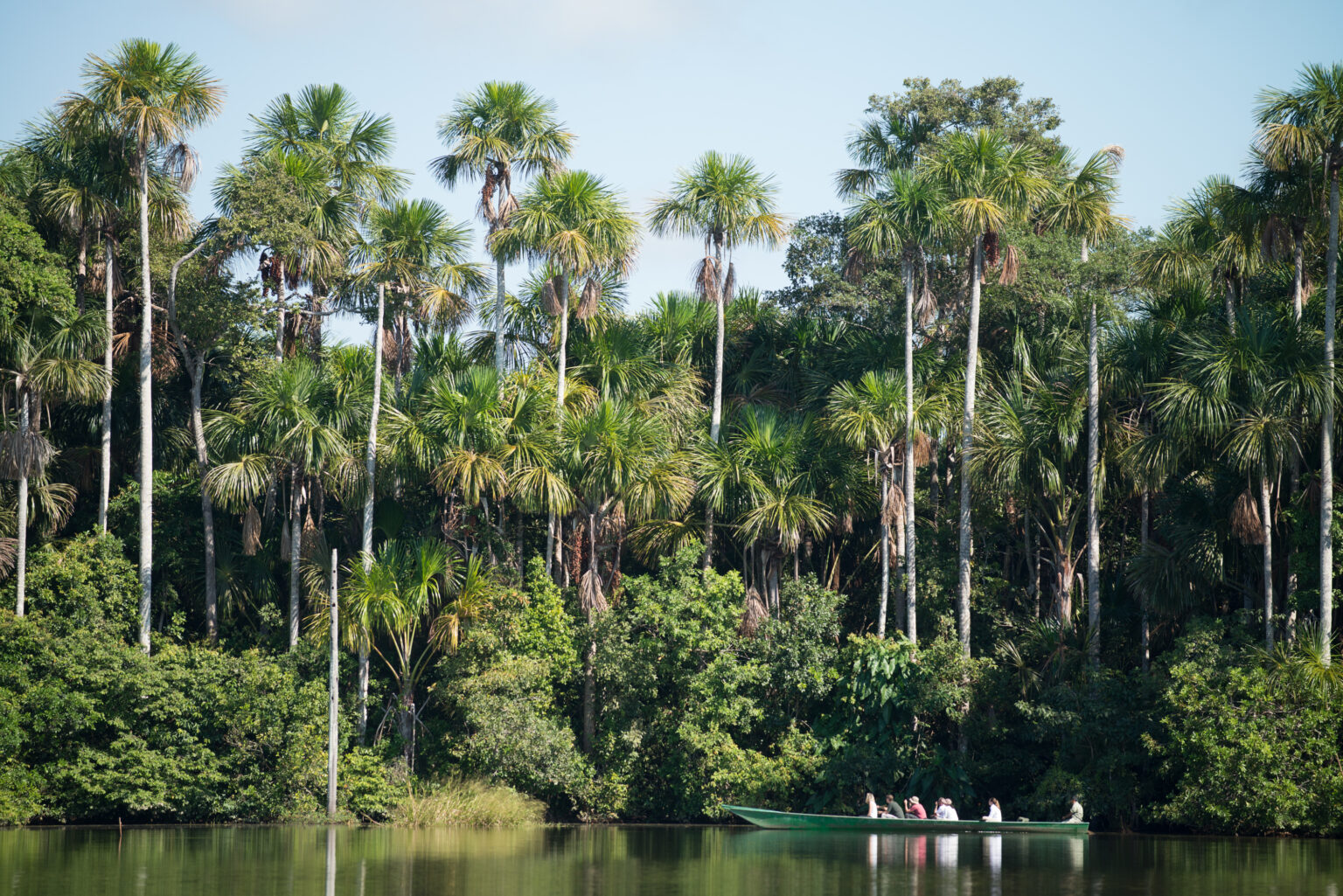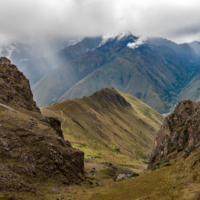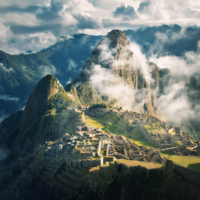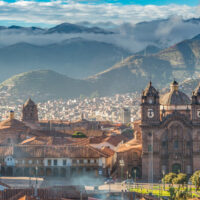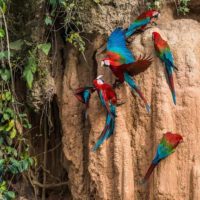Travel consciously through Peru's magnificent landscapes
This 12-day itinerary highlights some of the most sustainable and eco-conscious properties in Peru. International and domestic flights generate the majority of carbon emissions for any traveler, which is why Extraordinary Journeys offsets all client flights. Take things a step further by selecting properties and experiences in Peru that emphasize sustainability and community-based tourism without sacrificing comfort or beauty. Sustainable Peru takes you from historic Lima to the green hills of the Sacred Valley to the shining citadel of Machu Picchu perched on a mountaintop in the Andes, and finally to the dense Amazon jungle.
This luxury itinerary largely features Inkaterra properties. Inkaterra is a Peruvian non-profit that has been carbon neutral since 1989 and has been a leader in geotourism and conservation in Latin America since 1975. Eco-lodges are just the beginning; the brand supports and funds scientific research and biodiversity conservation. The hotels are owned and operated by Peruvians, and more than 4,000 local people have been trained in hospitality, field guidance, and agroforestry, providing meaningful career opportunities within their local communities. Workshops are constantly organized to raise awareness of how to care for the environment. In 2021, Inkaterra was acknowledged by the United Nations as the first "Climate Positive" hotel brand in the entire world. Read more about each individual hotel's sustainability efforts in the Trip Highlights below.
Who is a luxury Sustainable Peru trip best for?
Travelers wishing to reduce or mitigate their carbon footprint and environmental impact, and those focused on community-based tourism.
Day-to-day itinerary
DAYS 1 & 2:
Arrive in Lima, Iberostar Miraflores
DAYS 4, 5 & 6:
Fly to the Sacred Valley, Inkaterra Hacienda Urubamba
DAY 7:
Train to Machu Picchu, Inkaterra Machu Picchu Pueblo
DAYS 8 & 9:
Train to Cusco, Inkaterra La Casona
DAYS 10, 11, & 12:
Fly to Puerto Maldonado, Inkaterra Reserva Amazonica
Sustainable Peru trip highlights
- This journey begins in Lima, Peru's cosmopolitan coastal capital. Though expansive and modern, Lima retains its colonial-era historic center with beautifully preserved architecture. The more modern neighborhoods of Miraflores and Barranco are traveler favorites for stunning views of the Pacific Ocean, a buzzing restaurant and pub scene, and galleries and street art. Check into Iberostar Miraflores, the first single-use plastic-free hotel in Lima.
- Next, take a short flight to the Sacred Valley, where you will spend a few days acclimating to the altitude at Inkaterra Hacienda Urubamba. With architecture inspired by the area's cultural history, the Hacienda sits on 100 acres and is surrounded by the Sacred Valley's famous green mountains. The lodge includes an "earth-to-table" dining concept, with a 10-acre organic farm where guests are encouraged to pick their own produce. Crops like quinoa, giant corn, medicinal herbs, and potatoes are carbon-free and farmed using traditional hand tools and oxen. The Sacred Valley, in general, and Hacienda Urubamba are great places for eco-friendly adventure sports like hiking, mountain biking, rafting, and horseback riding.
- Next, take the train to Machu Picchu. After exploring the jewel of Incan history, you will spend the night at Inkaterra's Machu Picchu Pueblo hotel. A destination unto itself, the lodge sits on a 12-acre mountainside reserve, emulating the design of an ancient Andean village: terraced hills, waterfalls, stone pathways, and whitewashed adobe casitas are tucked into the cloud forest of the Andes. The property is a sanctuary for native flora and fauna; the property has registered 214 bird species and 372 native orchid species. There's even an organic, black tea plantation. Inkaterra is leading efforts to make Machu Picchu the first carbon-neutral Wonder of the World. Already, through an innovative waste management strategy and an ambitious plan to nurture one million trees across the area, Machu Picchu has become the first city in Latin America to achieve a circular economy.
- Take the train back to Cusco, the historic capital of Peru, where Incan architecture mingles with Spanish Colonial influence and history. Spend your nights in the Plaza de las Nazarenas, at the 16th-century manor house, Inkaterra La Casona. Delicately restored over five years, La Casona celebrates the site's storied past, once a training ground for an elite Incan army, and once welcoming guests such as Diego de Almagro and Simon Bolivar. The only Inkaterra property housed in a renovated historic building, sustainable design was still integral to the construction. The property was renovated and built with local materials, including vintage pieces, using no heavy machinery. The hotel features the building's original doors, windows, and wooden balconies with their complex wood carvings, and melds Pre-Columbian and colonial furniture to furnish the 11 suites. The stucco ceilings, wooden carvings, and parts of the furniture are more than 400 years old. A stay in La Casona helps Inkaterra to continue to preserve Peru's history.
- Finally, fly back to sea level to reach the Peruvian Amazon jungle and spend three nights at Inkaterra Reserva Amazonica. Arrive at your lantern-lit, palm-thatched wooden cabana inspired by Ese’Eja culture via dugout canoe on the Madre de Dios river in the southern Peruvian rainforest. Designed with minimal impact on the environment, the cabanas were built using locally sourced materials and blend with their surroundings, providing a strong sense of place within the Amazon jungle. Located in a private ecological reserve, the hotel engages in reforestation projects, biodiversity research, and wildlife conservation efforts. Meals are made with locally sourced, organic, and seasonal produce and support local farmers. Spend your days walking and boating through the trail and river networks of the reserve.
Price
Starting at $7,950 per person sharing in 2024.
When is the best time to travel to Peru?
The best time to visit the Machu Picchu area is between May through October, the dry season. If possible, Extraordinary Journeys recommends traveling in shoulder season late April to early June, and September-October to make a greater impact on your sustainability initiatives. This is also a good time to visit the Amazon.
Sustainable Peru map
Easy extensions
Take the train to southern Peru to explore more of the country's indigenous history and culture. Travel to Lake Titicaca, one of the highest-altitude lakes in the world, then continue to Colca Canyon and Arequipa.
Explore other itineraries
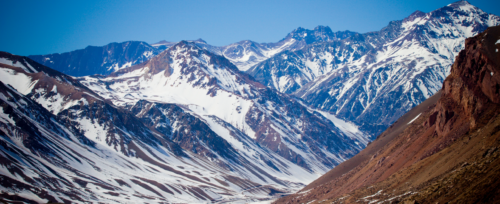
- Itinerary
Sustainable Argentina
Travel consciously through Argentina’s diverse landscapes
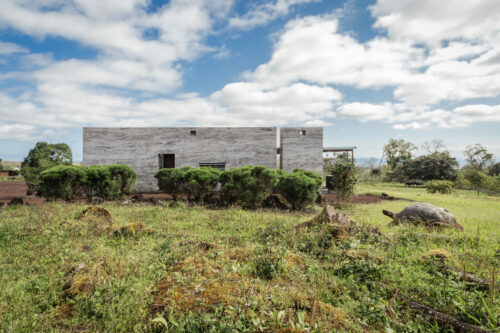
- Itinerary
Sustainable Ecuador
Travel consciously through Ecuador's magnificent landscapes

- Itinerary
Sustainable Chile
Travel consciously through Chile's magnificent landscapes




